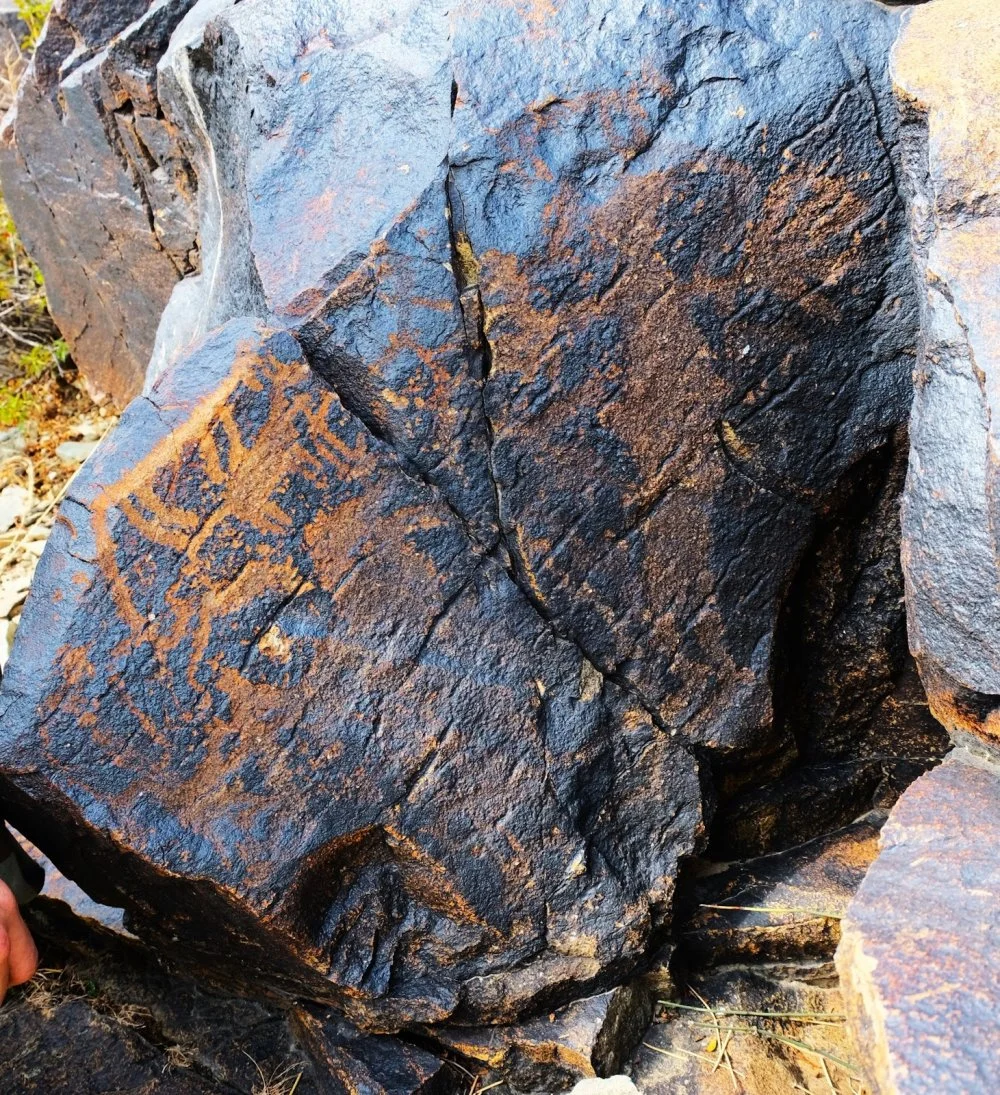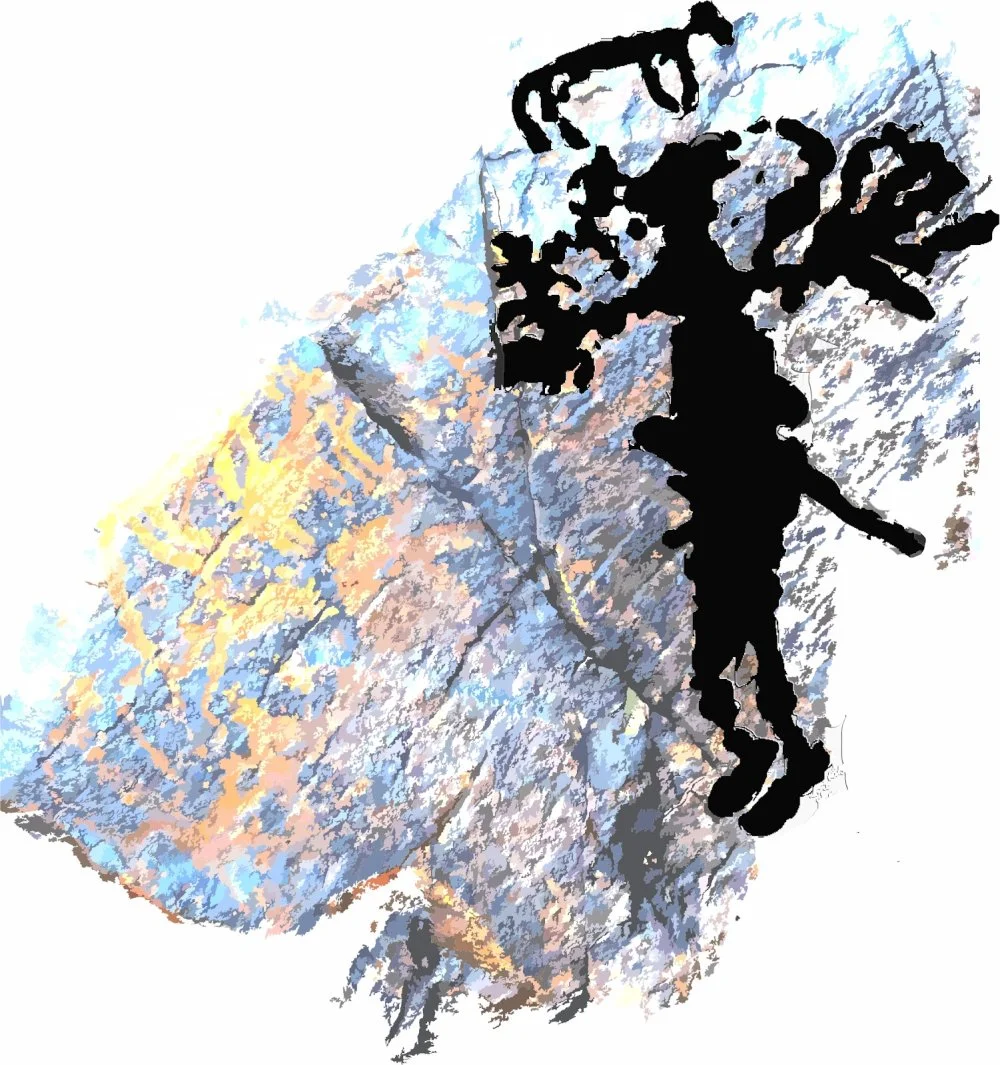On 12 July 2024, a remarkable discovery was made in the Eshkiolmes Mountains in Kazakhstan. Sultan and Amirkhan Dzhalishev, employees of the Eurasian Bank participating in the Petroglyph Hunters expedition, uncovered an intriguing petroglyph. The rock carving portrays a humanoid figure with outstretched arms, seemingly ready to embrace the whole world.
The Eshkiolmes sanctuary, one of the largest collections of rock art sites in Eurasia, was first discovered in 1982 by archeologist A.N. Maryashev and the Kazakh Pedagogical Institute students. Despite its significance, the area remains incompletely studied. Last year, a chance discovery during a scientific conference revealed a gorge housing thousands of previously unknown petroglyphs from various eras of history, which also remained unexplored.

Bighand of Eshkiolmes /Olga Gumirova
However, an expedition was undertaken in 2024, which produced a number of valuable findings, and the newly found image of a figure with large hands, possibly a deity, stands out among other important discoveries made by petroglyph hunters. But why do scientists believe that this scene depicts a deity?
The answer lies in the analogies that can be drawn with the drawings of the Sumerians, ancient Egyptians, and Assyrians. In these cultures, high-status characters differed from others in their size—gods were depicted as larger than humans, kings larger than their subjects, and the dead larger than the living. Additionally, the creation of this petroglyph, approximately dated to 2000 BCE, nearly coincides with the peak of these civilizations.

Bighand of Eshkiolmes. Illustration/Olga Gumirov
Of particular interest are the disproportionately large palms of the deity. Who the figure is and what it commanded is not known with any certainty, and we can only speculate. For instance, the ancient god Mithra, an Indo-Iranian deity who was revered over a vast territory including Kazakhstan, bore the title of being ‘large-handed’. According to the Vedas,i
In later texts, Mithra's responsibilities became more complex—he became the patron of light and the god who sealed unbreakable oaths. He was extremely popular, and people often prayed to him, hoping for his generosity in granting their wishes. Perhaps that's why he was called ‘large-handed’. We do not know if the ancient shaman-artist depicted Mithra in the Eshkiolmes mountains, but he and his tribesmen apparently counted on the deity hearing and fulfilling all their requests. After all, he certainly had the right hands for the task.




